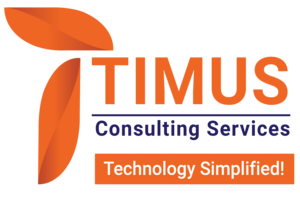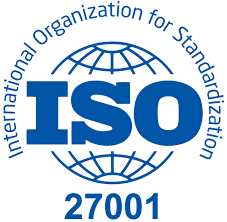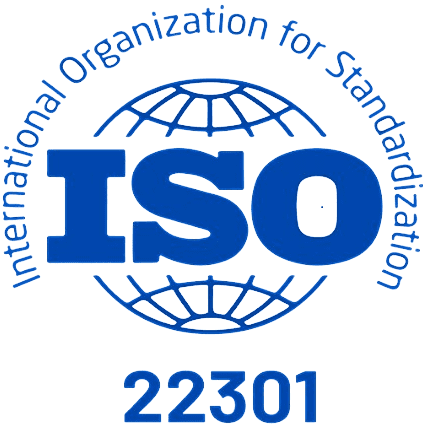Object-Relational Mapping (ORM) is a powerful concept used in software development to bridge the gap between object-oriented programming (OOP) and relational databases. In this blog post, we will explore what ORM is, how it works, the benefits it provides, and popular ORM frameworks used in modern software development.
What is ORM?
Object-Relational Mapping (ORM) is a technique that allows developers to interact with a relational database using object-oriented programming languages. In simpler terms, ORM acts as a mediator between the two paradigms—object-oriented programming, where data is represented as objects, and relational databases, where data is stored in tables with rows and columns.
ORM frameworks automatically map the database tables to classes and the rows to instances of those classes, so developers can manipulate database data in the form of objects rather than dealing with raw SQL queries.
How Does ORM Work?
The idea behind ORM is simple: it abstracts away the underlying SQL queries by providing an object-oriented interface to interact with the database. Here’s a basic overview of how ORM works:
-
Mapping Classes to Database Tables:
ORM frameworks map the fields of a class to the columns of a corresponding database table. For example, a class `Person` in the code may be mapped to a `person` table in the database.
-
CRUD Operations:
The ORM handles the basic CRUD (Create, Read, Update, Delete) operations by automatically generating SQL queries behind the scenes. For example, inserting a new `Person` object would automatically translate into an `INSERT` SQL statement.
-
Object-Relational Mapping:
ORM frameworks provide the capability to fetch data as objects (deserialization) and store objects in the database (serialization). This way, you can work with objects in your application, and the ORM will handle the translation to and from relational data.
-
Relationships:
ORM frameworks handle relationships between entities (tables) like one-to-many, many-to-one, and many-to-many. Developers don’t need to manually join tables in SQL; the ORM handles this efficiently.
Key Concepts in ORM
-
Entities and Models:
An entity is an object that corresponds to a table in the database. For example, if you have a `User` class in your code, it will typically map to a `users` table in the database. These entities can be treated as objects in your application.
-
Session or Unit of Work:
ORM frameworks typically use a session to track the state of objects and automatically handle transactions. This session acts like a “Unit of Work” that manages the persistence of objects to the database.
-
Lazy Loading:
Lazy loading is a technique used to delay the loading of related data until it is actually needed. For instance, if you have a `User` object with many associated `Post` objects, the ORM may not load all the posts initially but will fetch them only when you access the `Post` collection.
-
Caching:
Some ORM frameworks use caching mechanisms to reduce database load by storing objects in memory. This helps improve performance by preventing the ORM from querying the database multiple times for the same data.
Benefits of Using ORM
-
Simplified Database Interaction:
ORM allows developers to interact with the database using high-level object-oriented code, avoiding the need to write complex SQL queries manually. This results in cleaner and more maintainable code.
-
Reduced Boilerplate Code:
Without ORM, developers would need to write repetitive SQL queries for CRUD operations. ORM reduces this boilerplate code by handling these operations automatically.
-
Improved Developer Productivity:
ORM frameworks automate common tasks like database schema synchronization, transactions, and query generation. This accelerates development and allows developers to focus on business logic rather than database intricacies.
-
Portability:
ORM frameworks often provide a layer of abstraction that makes it easier to switch between different relational database management systems (RDBMS). As long as the ORM supports the desired database, developers don’t need to change their code when migrating to another database.
-
Security:
ORM can help prevent SQL injection attacks by using parameterized queries and escaping input automatically. Since developers don’t need to manually build SQL strings, it minimizes the risk of security vulnerabilities.
Limitations of ORM
Despite its many advantages, ORM has some limitations that developers need to be aware of:
-
Performance Overhead:
ORM frameworks can introduce performance overhead, particularly in complex queries or when dealing with large datasets. This overhead comes from the additional layers of abstraction and automatic query generation.
-
Learning Curve:
ORM frameworks have their own conventions and syntax that developers must learn. While they simplify database interactions, getting accustomed to the specific ORM framework can take some time.
-
Complex Queries:
While ORM can handle simple CRUD operations easily, it may struggle with more complex queries involving multiple joins, subqueries, or custom SQL logic. In these cases, developers may need to fall back on raw SQL queries.
-
Less Control Over SQL:
Since ORM abstracts away SQL, developers lose some level of control over how queries are generated. In situations where fine-tuning SQL queries for performance is essential, ORM can be limiting.
Popular ORM Frameworks
There are several ORM frameworks available for different programming languages. Here are some of the most widely used:
-
Hibernate (Java):
One of the most popular ORM frameworks for Java, Hibernate provides comprehensive features for mapping Java objects to database tables and generating SQL queries. It supports caching, lazy loading, and transaction management.
-
Entity Framework (C#/.NET):
Entity Framework (EF) is Microsoft’s ORM solution for .NET. It allows developers to work with relational databases using .NET objects and supports LINQ queries, migrations, and both code-first and database-first approaches.
-
Django ORM (Python):
The Django web framework comes with an integrated ORM that allows developers to interact with databases using Python classes. It is one of the most popular ORM frameworks in the Python ecosystem.
-
ActiveRecord (Ruby on Rails):
ActiveRecord is the default ORM framework in Ruby on Rails. It follows convention over configuration principles and provides an intuitive, powerful API for interacting with databases.
-
SQLAlchemy (Python):
SQLAlchemy is a more flexible ORM framework in Python, providing both high-level ORM features and the ability to write raw SQL queries for fine-grained control over performance.
-
Eloquent ORM (Laravel):
Eloquent is the ORM used by the Laravel PHP framework. It provides an expressive, elegant syntax and supports relationships, eager loading, and migrations.
When to Use ORM
ORM is an excellent choice in scenarios where:
- The application needs to interact with a relational database frequently.
- Developers want to focus on business logic rather than manually writing SQL.
- The database schema is relatively stable and doesn’t require frequent custom queries.
- The team is working with a programming language that has a mature ORM framework.
However, ORM might not be ideal when:
- Performance is a critical factor and you need fine-tuned control over every database query.
- You are working with a very complex database schema or need complex queries with multiple joins and subqueries.
- The application requires full control over the SQL queries being executed for optimization purposes.
Conclusion
Object-Relational Mapping (ORM) is a transformative technology in software development that simplifies the interaction between object-oriented code and relational databases. By abstracting away the intricacies of SQL and database interactions, ORM enables developers to focus on building features instead of managing data persistence. While ORM is incredibly powerful, it’s important to understand its limitations, and in some cases, you may need to supplement ORM with raw SQL to meet specific performance or complexity needs.
Ultimately, ORM can greatly enhance productivity and code quality, especially when used appropriately in the right contexts. Whether you’re building a web application, a desktop application, or any other software that relies on a relational database, understanding ORM and how to use it effectively will make you a better and more efficient developer.
About us
We are Timus Consulting Services, a fast-growing, premium Governance, Risk, and compliance (GRC) consulting firm, with a specialization in the GRC implementation, customization, and support.
Our team has consolidated experience of more than 15 years working with financial majors across the globe. Our team is comprised of experienced GRC and technology professionals that have an average of 10 years of experience. Our services include:
- GRC implementation, enhancement, customization, Development / Delivery
- GRC Training
- GRC maintenance, and Support
- GRC staff augmentation
Our team
Our team (consultants in their previous roles) have worked on some of the major OpenPages projects for fortune 500 clients across the globe. Over the past year, we have experienced rapid growth and as of now we have a team of 15+ experienced and fully certified OpenPages consultants, OpenPages QA and OpenPages lead/architects at all experience levels.
Our key strengths:
Our expertise lies in covering the length and breadth of the IBM OpenPages GRC platform. We specialize in:
- Expert business consulting in GRC domain including use cases like Operational Risk Management, Internal Audit Management, Third party risk management, IT Governance amongst others
- OpenPages GRC platform customization and third-party integration
- Building custom business solutions on OpenPages GRC platform
Connect with us:
Feel free to reach out to us for any of your GRC requirements.
Email: [email protected]
Phone: +91 9665833224
WhatsApp: +44 7424222412
Website: www.Timusconsulting.com





